 |
|
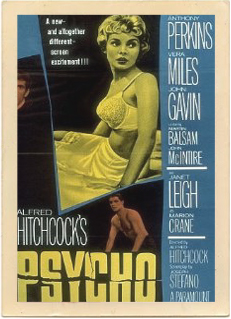 Psycho Psycho1960. Universal Studios, Black & White, Aspect Ratio 1.85 : 1, 109 minutes, Not Rated Release Date: June 16, 1960 Psycho is available at Amazon.com as a Collector’s Edition DVD, in The Alfred Hitchcock Collection: The Best of Hitchcock, Vol. 1 DVD Box, on Blue Ray, and on VHS. Movie Synopsis: Classic Hitchcock psychological thriller involving a female embezzler who ends up in the wrong place at the wrong time... which happens to be the Bates Motel, run by a twisted mama’s boy. Cast: Anthony Perkins, Janet Leigh, Vera Miles, John Gavin, Martin Balsam, Patricia Hitchcock Director: Alfred Hitchcock Thoughts on the Movie: Who hasn’t seen Psycho? Generation after generation of females have been scared to take a shower after viewing Hitchcock’s masterpiece thriller. But, of course, there’s more to this movie than that. Clever and creepy in glorious black and white, with dialogue that actually makes you think, it’s sort of weird to say, but this film is a joy to watch. It pulls you in and traps you in its uneasy web. Don’t ever think, “I’ll just watch a few minutes of Psycho,” because no matter where you come in on the action, you’ll be staying till the very end... every time. Why is this movie included on my list of films with locations in the Great Southwest? Because of its opening scene that features a downtown hotel in Phoenix, Arizona. That’s excuse enough for me. ~Jean 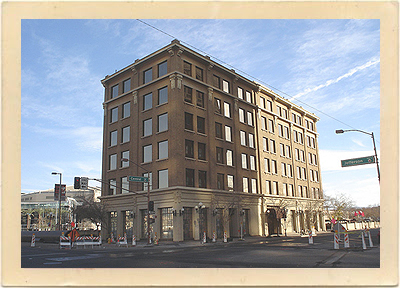 Location Site: Location Site:Jefferson Hotel, Phoenix, Arizona (see Map) The building (located at 109 S. Central) served as the establishing shot of the window of the hotel room that Marion Crane and Sam Loomis were in at the beginning of the film, letting viewers know the film was set in Phoenix. A second unit filmed the opening shot of the Jefferson Hotel. Notice the Christmas decorations? The shot was filmed at the beginning of December, but Christmas doesn’t get mentioned and the weather seems surprisingly hot. To cover this glitch, the time and date are added over the shot: Friday, December the Eleventh. The holiday season is never referred to again. Right: The Jefferson Hotel was used for location shots for the opening scene in Alfred Hitchcock’s 1960 movie masterpiece, “Psycho.” This hotel, in which MarionCrane and Sam Loomis appeared to spend their illicit lunchbreak (the scenes were actually shot back in the studio) has been renovated to become the Barrister Place Building, at the southeast corner of Jefferson Street. It now houses the Phoenix Police Museum. All buildings that were originally in the foreground have since been razed for parking. 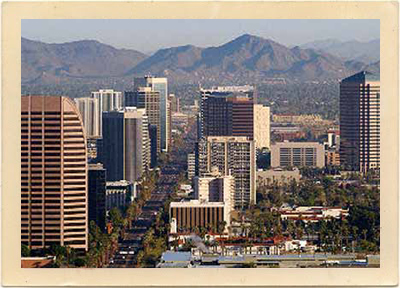 About Phoenix, Arizona: About Phoenix, Arizona:Phoenix, Arizona (population 1,445,632; elevation 1,117 feet; 33° 26’ 54” N, 112° 4’ 25” W) is located in the northeastern section of the Sonoran Desert, on I-25 and I-10. Phoenix is the capital of Arizona and is also the anchor of the Phoenix metropolitan area (also known as the Valley of the Sun), the 12th largest metro area by population in the United States with more than 4.1 million people. Right: A more modern day view of downtown Phoenix, Arizona. The Phoenix area is surrounded by the McDowell Mountains to the northeast, the White Tank Mountains to the west, the Superstition Mountains far to the east, and the Sierra Estrella to the southwest. Within the city are the Phoenix Mountains and South Mountains. Residents of the city are known as Phoenicians. As with most of Arizona, Phoenix does not observe daylight saving time. In 1973, Governor Jack Williams argued to the U.S. Congress that energy use would increase in the evening, as refrigeration units were not used as often in the morning on standard time. He went on to say that energy use would rise “because there would be more lights on in the early morning.” He was also concerned about children going to school in the dark. The exception to this are lands of the Navajo Nation in Northeastern Arizona, which observe daylight saving time in conjunction with the rest of their tribal lands in other states. 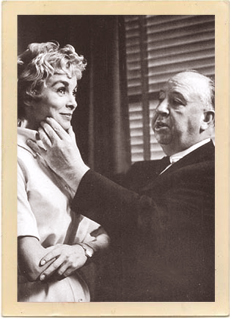 Phoenix was incorporated as a city in 1881, after being founded in 1861, near the Salt River, and its confluence with the Gila River. The city has a notable and famous political culture, and has been home to numerous influential American politicians and other dignitaries, including: Barry Goldwater, William Rehnquist, John McCain, Janet Napolitano, Carl Hayden, and Sandra Day O’Connor. Phoenix was incorporated as a city in 1881, after being founded in 1861, near the Salt River, and its confluence with the Gila River. The city has a notable and famous political culture, and has been home to numerous influential American politicians and other dignitaries, including: Barry Goldwater, William Rehnquist, John McCain, Janet Napolitano, Carl Hayden, and Sandra Day O’Connor.The history of Phoenix as a city begins with Jack Swilling, a Confederate veteran of the American Civil War who had earlier come west to seek wealth in the 1850s. On an outing in 1857, he stopped to rest at the foot of the White Tank Mountains. Swilling observed the abandoned river valley and considered its potential for farming: the terrain and climate were optimal, only a regular source of water was necessary. The existence of the old Hohokam ruins, showing clear paths for canals, made Swilling imagine new possibilities. Left: Janet Leigh seems amused at Alfred Hitchcock’s direction during the filming of the “hotel scene” in the masterpiece thriller, “Psycho.” Swilling had a series of canals built, which followed those of the ancient Native American system. A small community formed that same year about four miles east of the present city. It was first called “Pumpkinville,” due to the large pumpkins that flourished in fields along the canals. Later it was called “Swilling’s Mill,” in his honor, though later it was renamed to “Helling Mill,” “Mill City,” and finally, “East Phoenix.” Eventually, Lord Darrell Duppa suggested the name Phoenix, as it described a city born from the ruins of a former civilization. The coming of the railroad in the 1880s was the first of several important events that revolutionized the economy of Phoenix. A spur of the Southern Pacific Railroad, the Phoenix and Maricopa, was extended from Maricopa into Tempe in the late 1880s. Merchandise now flowed into the city by rail instead of wagon. Phoenix became a trade center with its products reaching eastern and western markets. The early economy of Phoenix was primarily agricultural, dependent mainly on the “5Cs” which were copper, cattle, climate, cotton and citrus. In the last four decades most of the farmlands have been turned into suburbs, and the economy has diversified as swiftly as the population has grown. 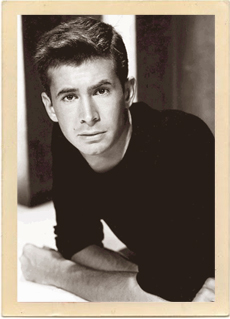 Lodging & Dining: Maricopa Manor. 15 West Pasadena Avenue, Phoenix, Arizona Maricope Manor is in the heart of north central Phoenix in a historic residential district, less than half a minute from the intersection of Central Avenue and Camelback Road and only ten minutes north of the downtown business district. A Spanish style hacienda (dating back to 1928) with six suites, it is the perfect jumping off point for other Arizona destinations. Chino Bandito. 15414 N. 19th Avenue, Suite K, Phoenix, Arizona Guy Fieri of Food Network’s “Diners, Drive-ins and Dives” visited this unique eatery and he gave it a thumbs up. Portion size is large, the food is delicious, and the price is right. Where can you get Mexican and Chinese food not only at the same diner, but on the same plate? On the menu you’ll find eclectic choices like an Egg Foo Young Burrito or Jerk Fried Rice with Black Beans. Right: Anthony Perkins turned in a spectacular performance as the creepy “Norman Bates” in Alfred Hitchcock’s psychological thriller, “Psycho.” Awards: • Janet Leigh won the Golden Globe as Best Supporting Actress. • Janet Leigh was nominated for the Oscar as Best Supporting Actress. • Alfred Hitchcock was nominated for the Oscar as Best Director. • Alfred Hitchcock was nominated as Best Director by The Directors Guild of America. Movie Trivia: • Other actresses considered for the role of Marion were: Eva Marie Saint, Piper Laurie, Martha Hyer, Hope Lange, Shirley Jones, and Lana Turner. • The film only cost $800,000 to make and has earned more than $40 million. Alfred Hitchcock used the crew from his TV series “Alfred Hitchcock Presents” (1955) to save time and money. In 1962, he exchanged the rights to the film and his TV series for a huge block of MCA’s stock, becoming its third-largest stockholder. 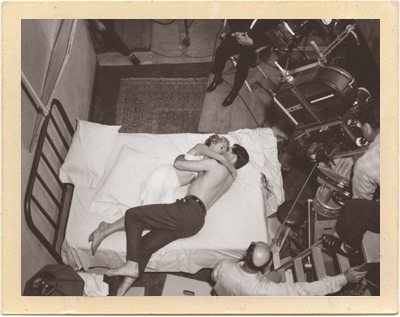 Right: The film crew on the set of “Psycho,” captures the love scene between Marion Crane (Janet Leigh) and Sam Loomis (John Gavin). It is this secret relationship that ultimately leads Marion to her fate at the Bates Motel. Right: The film crew on the set of “Psycho,” captures the love scene between Marion Crane (Janet Leigh) and Sam Loomis (John Gavin). It is this secret relationship that ultimately leads Marion to her fate at the Bates Motel.• Alfred Hitchcock makes his trademark cameo appearance about four minutes into the film, outside Marion’s office, wearing a cowboy hat. • Marion’s white 1957 Ford sedan (owned by Universal) is the same car that the Cleaver family drove on “Leave It to Beaver” (1957). Oh, my! • This was the first American film ever to show a toilet flushing on screen. • Psycho was voted the seventh scariest film of all time by Entertainment Weekly magazine. • The film was based on the novel "Psycho," written by Robert Bloch. In the novel, the character of “Marion” was “Mary Crane.” The name was changed because the studio legal department found that two real people named Mary Crane lived in Phoenix, Arizona. • When the cast and crew began work on the first day, they had to raise their right hands and promise not to divulge one word of the story. Alfred Hitchcock also withheld the ending part of the script from his cast until it was time to shoot it. • Anthony Perkins was paid $40,000 dollars for his role, which is the amount of money that Marion Crane embezzles. • Psycho was not shown on U.S. TV until 1970, following a highly successful theatrical re-release the previous year. At that time, Universal released it on the syndication market, where it quickly became a popular staple on local late night horror film showings. • The film score, composed by Bernard Herrmann, is played entirely by stringed instruments. Alfred Hitchcock was so pleased with the score that he doubled the composer’s salary to $34,501. Hitchcock later said, “33% of the effect of Psycho was due to the music.” • There are several references to birds in Psycho: Marion’s surname is Crane, Norman’s hobby is stuffing birds, and he states that Marion eats like a bird. Coincidentally, Alfred Hitchcock’s next film was The Birds (1963). Character Quote: “A boy’s best friend is his mother.” ~Norman Bates (Anthony Perkins) |
|